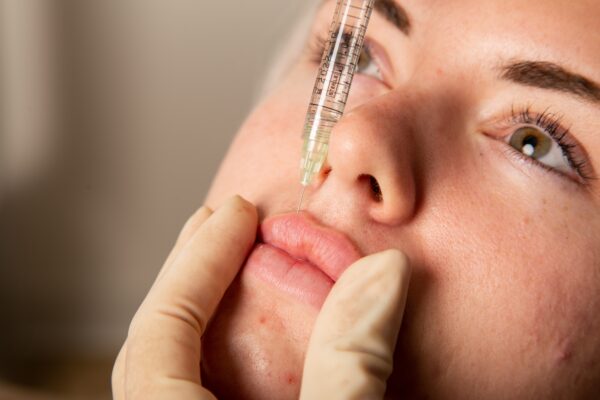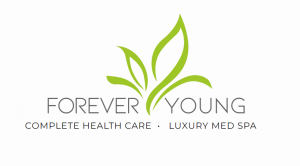
Lip Fillers Treatment in Edison, New Jersey
Lip fillers are cosmetic injectable treatments used to enhance the appearance of the lips. They are commonly used to add volume, shape, and definition to the lips, creating a fuller and plumper look. The most commonly used lip fillers are made of hyaluronic acid, a substance naturally found in the body that helps to maintain moisture and structure in the skin. We use Juvederm and Restylane.
Forever Young Complete Healthcare provide the best Lip Filler treatment in Edison, New Jersey.
How Lip Fillers Work to Achieve Beautiful Lips
Hyaluronic acid is a naturally occurring substance found in the body that helps maintain moisture and structure in the skin. When lip fillers are injected into the lips, the hyaluronic acid molecules attract and bind with water, resulting in increased hydration and volume in the treated area. This helps plump up the lips, creating a fuller and more defined appearance.
Enhancing Your Lips: Unveiling the Lip Filler Treatment Experience
The lip filler treatment process typically involves the following steps:
Consultation: Prior to the treatment, you will have a consultation with a qualified professional. During this session, you will discuss your goals and expectations for the treatment, and the professional will evaluate your lips, skin condition, and overall health to determine if you are a suitable candidate for lip fillers. If you have had previous lip filler injections, and the doctors at Forever Young Complete Health care, feel that to get optimal results you may have to dissolve the old one, they will let you know.
Preparation: On the day of the treatment, the professional will cleanse the treatment area to ensure it is free from any impurities. They may apply a topical numbing cream to the lips to minimize any discomfort during the injections. The numbing cream usually takes effect within 15-30 minutes.
Injection: Our specialist doctors at Forever Young Complete Healthcare will apply a numbing cream to your lips before performing the lip filler procedure. Your lips will become numb from the cream, making the procedure as painless as possible for you. Common ingredients in numbing creams include benzocaine, lidocaine, and tetracaine (BLT). Your lips should be numb after 15 to 30 minutes.
Then, your specialist will use a tiny needle to inject lip filler into some or all of your lips, including the vermillion border around the edges of your lips, the cupid’s bow in the center of your upper lip, and the oral commissures (corners of your mouth). Although the Procedure is made as comfortable as possible, your eyes might water and you might feel a pinching sensation. Also, the pain tolerance is different for different people.
Your specialist will typically inject 1mL of lip filler into your lips. To lessen swelling and bruising, your expert may place an ice pack on your lips while performing the procedure.
Sculpting and shaping: As the filler is injected, the professional will carefully mold and shape the lips to create a natural and aesthetically pleasing result. They may use their hands or gentle pressure to massage and manipulate the filler to achieve the desired outcome.
Evaluation and touch-ups: After the injections are complete, both you and the professional will assess the lips to evaluate the results. If any additional filler is required to achieve the desired outcome, the professional may perform touch-up injections.
Exploring the Wide Range of Conditions Treated with Lip Filler
Lip fillers can be used to address various lip-related conditions and concerns. Here are some examples of different types of conditions that can be treated with lip fillers:
Thin Lips: Lip fillers are commonly used to add volume and fullness to naturally thin lips, helping to create a more plump and desirable appearance.
Uneven Lips: If the upper and lower lips are uneven or asymmetrical, lip fillers can be injected strategically to balance out the proportions and achieve a more symmetrical look.
Lip Lines/Wrinkles: Lip fillers can be effective in smoothing out fine lines and wrinkles around the lips, such as vertical lines above the upper lip (also known as smoker’s lines or lipstick lines). The fillers help to plump up the area, reducing the appearance of these lines and creating a smoother texture.
Lip Sagging or Deflation: With age, lips can lose volume and begin to sag or appear deflated. Lip fillers can restore volume and lift to the lips, improving their shape and contour.
Lip Scarring: Lip fillers can be used to minimize the appearance of certain types of lip scars. By injecting filler into the scarred area, the texture and contour of the scar can be softened, resulting in a smoother and less noticeable appearance.
Customizable Results: Lip fillers offer a customizable approach, allowing individuals to achieve their desired lip appearance. The amount of filler used, the injection technique, and the treatment plan can be tailored to suit each person’s preferences, ensuring natural-looking and personalized results.
Behind the Beauty: Examining the Potential Adverse Effects of Lip Fillers
While lip filler treatments are generally safe, there are potential side effects and risks associated with the procedure. It’s important to be aware of these before undergoing the treatment. Common side effects of lip filler include temporary swelling, bruising, redness, and tenderness at the injection site. In rare cases, allergic reactions, infection, lumps, asymmetry, or lip asymmetry can occur. It’s important to consult a qualified professional and follow their instructions for a safe and satisfactory outcome.
Lip Filler Aftercare: How to Nurture and Protect Your Newly Enhanced Lips
After care treatment and maintenance are essential to ensure optimal results and minimize potential complications after lip filler treatment. Here are some general guidelines to follow:
- Applying an ice pack or cold compress to the treated area can help reduce swelling and minimize discomfort.
- Avoid touching or massaging the treated area for at least 24 hours after the procedure.
- Refrain from engaging in strenuous physical activities, such as intense exercise, for at least 24 to 48 hours after the treatment. Physical exertion can increase blood flow and potentially worsen swelling or bruising.
- Avoid exposing the treated area to excessive heat. When washing your face, be gentle around the lip area. Use a mild, non-abrasive cleanser and avoid excessive rubbing or scrubbing.
- Avoid makeup application, Follow the professional’s instructions, protect from the sun and stay hydrated.
A person’s decision to get lip fillers is personal. Consult a professional med spa like Forever Young Complete Health Care, based in Edison, New Jersey who specializes in lip fillers if you want to enlarge your lips and learn about your options. Although lip fillers can increase your self-confidence, you should be aware that they only last a short time. Discuss your queries and worries with our experts. Contact us for more information.
“Lip Fillers: Because Every Smile Deserves a Little Extra Glamour.”

